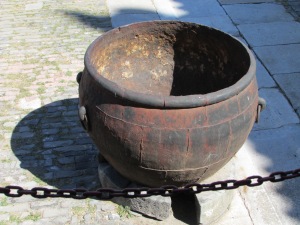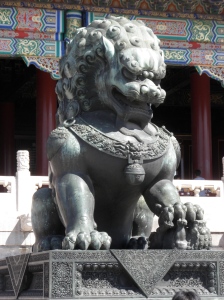
The CCCWA has released the new parent eligibility guidelines, effective immediately June 30, 2017. These guidelines were published yesterday in several locations such as Rainbow Kids, No Hands But Ours, and RedThread Advocates. I waited a day to report because I knew there would be many questions as to how to interpret the new guidelines. Agencies have now had clarification, so what is in the post reflects how agencies have been told the guidelines will be interpreted. Please note that some of these clarifications might change over the next few weeks as agencies figure out the nuances. I will update as things become more definite.
Here are the guidelines:
- Age– Parents must be at least 30. No more than 50 years age difference between the child and the youngest parent. This is the same as the previous requirement.
- Length of marriage– Couples need to be married for 2 years for a first marriage or only 1 divorce. If there are two divorces in the history, the couple needs to be married for 5 years. Years cohabiting can count toward the marriage. This is actually more generous than the previous guideline which required 5 years of marriage for any history of divorce and did not officially say that time cohabiting counted.
- Health– (1) Use of medication for “mental disorder” such as anxiety or depression is still allowed under the new guidelines. It is now explicitly stated that a psychological exam is required. (2) History of cancer has again appeared in the guidelines. You must be cancer free for 3 years for skin, breast, testicular, or thyroid cancer. Other types of cancer require 5 years cancer free. (3) Adoptive parents who have dwarfism themselves can only adopt from China if they adopt a child with the same condition, making official the previously unofficial policy.
- BMI– The BMI requirement remains under 40 in order to be eligible to adopt.
- Financial requirements– This remains a net worth of $80,000 for families plus an income of $10,000 per household member including the adopted child. The net worth is $100,000 for single parents, plus an additional $10,000 per household member above married parents. The 12/2014 guideline included a mention of “relaxing” in the case where the family did not meet the net worth requirement but were above the “local average living standards” which has now been omitted. The new guidelines say that the requirements could be relaxed for foreigners living in China. Many families were only able to qualify because they were given a cost of living waiver, so the loss of this will have a significant impact.
- Number of children in the home– Perhaps the most significant change is that families must not have more than 5 minors (under 18) in the home or only 2 for single parents. In addition, the youngest child in the home should be at least 3 years old at time of LID. The age of the 3 year old or a minor turning 18 is determined by what age they are at the time of LOI or LID, whichever is first.
- Frequency of adoption– There should be a year from the adoption date of the first adoption until “current adoption application date” to begin a second adoption. The current application date is submitting LOI. This means reusing a dossier is no longer an option.
- Adopting multiple children– Previously China allowed families to adopt two unrelated children at the same time, sometimes more depending on the circumstances. The guideline says “In principle, [parents] should adopt 1 child from China at a time.” It does make an exception for twins or siblings. Adopting two unrelated children at once was a very popular option for many families. The loss of this option will also have a significant impact.
- Singles– Two requirements regarding singles adopting were removed from the previous guidelines. One was that the age difference between a single parent and the child they are adopting cannot be greater than 45 years. The other stated that the single parent must not have children younger than age 6 in the home. Presumably this means that the requirements are now the same as married families in those areas, so this is an improvement.
- Expatriates– American citizens residing outside of the US must live in a country which is part of the Hague agreement or has an inter-country adoption program with China.
If you are currently in process to adopt from China but no longer qualify, here is how this will effect you:
- If you have LOA and are working towards travel—> Your process will continue normally
- If you have a LID, PA, and are waiting for LOA—->Your process will continue normally
- If you have PA but do not yet have a dossier logged in—->Your PA will be honored and you can continue the process
- If you have a dossier logged in but do not yet have a match—–>You will still be able to be matched because you qualified at the time your dossier was logged in.
- If you had started the process but are not matched nor have a dossier logged in—->You are no longer eligible for the China program
- If your agency has you matched to a “pre-release” file but you do not have a dossier logged in—–>I have not heard this clarified specifically, but since you cannot send a LOI until the file has officially been released, I think you will not be allowed to adopt because this falls under no PA, no LID
Will the CCCWA start granting waivers again for the harder to place kids?
We will have to wait and see on that. We can hope that with the stricter guidelines, there will be some leeway as there was previously.
What about the partnerships?
This document only contained adoptive parent eligibility requirements. Agencies are expecting information on the future of partnerships to be released separately, at some time in the near future.
Why did China make these changes? So many kids won’t get families now that you can’t adopt two at once, reuse your dossier, or adopt if you are a large family!
At the beginning of the document, China stated that this criteria is “in order to further promote the scientific and standardized level of inter-country adoption, and implement our working principle “everything for the children.” As far as I’m aware, adopting two at once was only an option in the US so they might see eliminating that as standardizing the level of inter-country adoption. This could also refer to bringing their requirements in alignment with those of other countries. If you look at the requirements of other country programs you will find that most say you can adopt a single child, specify a maximum number of children in the home, do not allow you to adopt with a baby or toddler in the home, and say that you must wait 1 or 2 years between adoptions.
These are common requirements because they are in alignment with what is considered best social work practices. Adopting a single child at a time and having over a year between adoptions allows the parents to focus on the physical and emotional needs of their new child. The same goes for not allowing an adoption with a child under age three in the home. The requirements state that “Parents should have enough time and energy to take care of the minors in the home, including the prospective adoptee.” Babies and toddlers require a lot of focused attention, the same as newly adopted children. A family who has six in the home who are spread out over a large age range will qualify sooner than a family with six under the age of five, which I have seen happen when families with young children adopt multiple children at once and have back to back adoptions.
It is very difficult to realize that you are no longer eligible to adopt from China. These new guidelines mean that our own family is no longer eligible. Even though we had no plans to adopt again, choosing not to adopt feels different from China saying you do not have the option. For many families it feels as if China is saying their family is no longer good enough, even though prior to this week you were good enough. People are looking at the children who would not be in their family if these policies had been in place previously and wondering why China now feels it isn’t in their child’s interest to be there. I understand all of these feeling. This is really hard for those families who love China and who love the children there who need families.
However, we have to keep in mind that China does not have to have an international adoption program at all. We do not have any entitlement to their children. The new rules are much closer to the rules they have had in place for the majority of the program. We have heard that China is very concerned about the amount of disruptions and dissolutions. Every single week, there are families who travel to China but decide not to adopt the child they were in process for. Perhaps China has concluded that the experiment in looser guidelines did not have good outcomes. That view might be oversimplified (certainly the special needs of the children now are greater than they were seven years ago), but even so, they are making this decision because they feel it is in the best interest of the children they place. I know many wonderful adoptive families who have more than six children, have young children, or who have adopted multiple unrelated children at once who disagree, but in the end, we have to choose to be thankful for the great number of children who were able to find families before China decided to restrict the parent criteria.
If you would like to consider another country’s adoption program, I would suggest you check program requirements at the US State Department website. Be sure to see how many adoptions occur from that country per year. A very low number indicates it is difficult to adopt from, even if an agency might say it is a good option. You can check program eligibility requirements and find agencies who have a program with that country at Rainbow Kids. For example, if you are no longer eligible to adopt from China because of family size, you might want to look at Poland, Hong Kong, Colombia, or Bulgaria.




